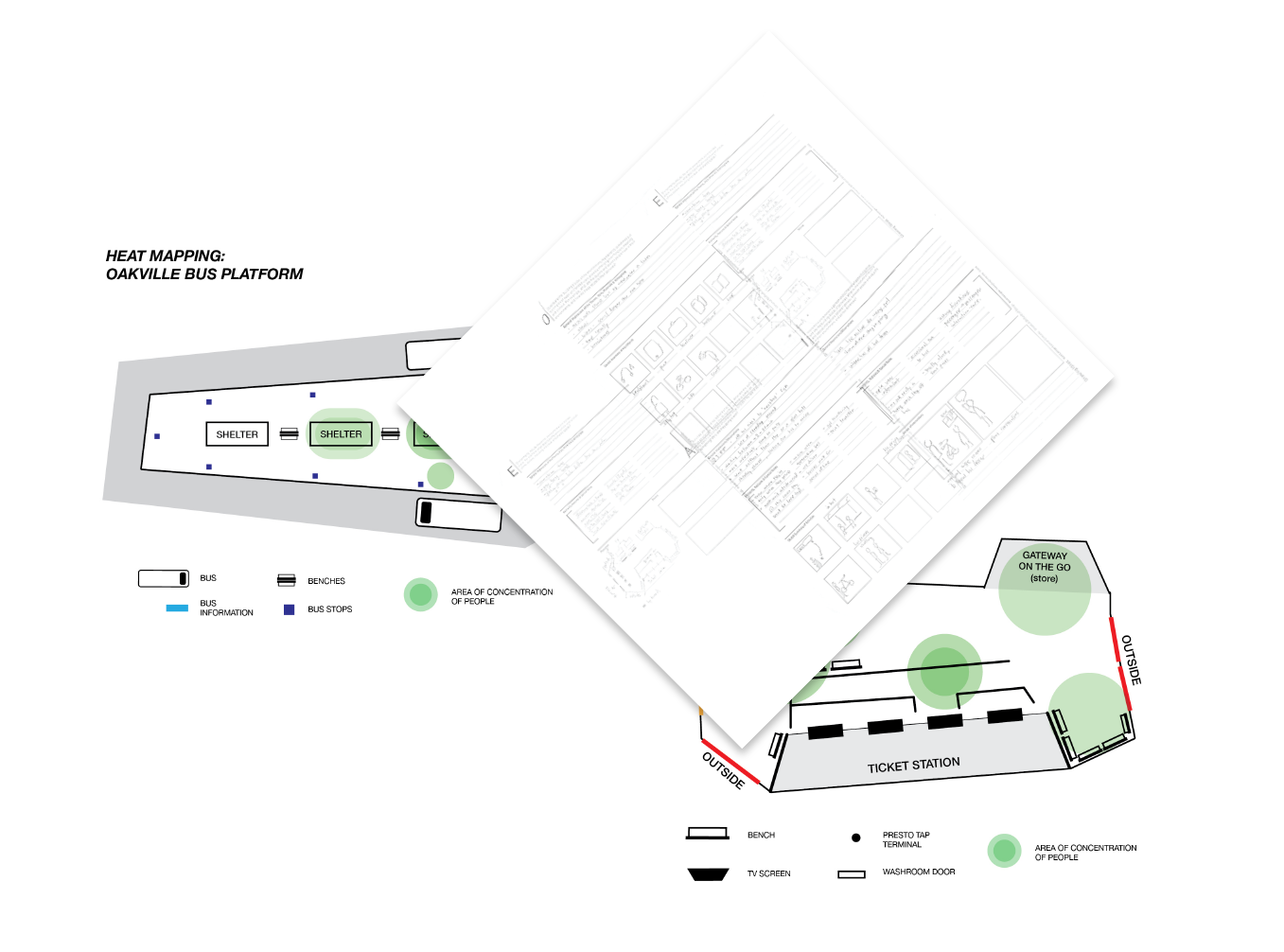Wayfound
Responsibilities
User Research, Environmental Design
Team
Kim Wright, Samantha Tu
Additional Collaborations
IXD Collab Workshop Students 2018
Overview
Wayfound allows public transit riders to navigate through underground station tunnels in a clear and stress-free manner.
Wayfound project was submitted to the OnTrack design competition that was hosted by Design Exchange. Our solution was one of the winning proposals︎.



Challenge
Issues such as crowding during peak hours, delays due to external factors, and unreliable information are among the top reasons public transit ridership is decreasing.
Objective
Propose a barrier-free feature for public transportation in Ontario that is accessible to the greatest number of people.
Project Background
The public transportation system in Ontario is far from
perfect. With many visible and invisible flaws that make it challenging for people with disabilities and
people without them. Every Canadian is affected.
The Government of Ontario recognizes this, and in collaboration with the Design Exchange︎, hosted the Connect: ONTrack Post-Secondary Design Competition. ONTrack aims to find design solutions that are accessible to the greatest number of people.
The Government of Ontario recognizes this, and in collaboration with the Design Exchange︎, hosted the Connect: ONTrack Post-Secondary Design Competition. ONTrack aims to find design solutions that are accessible to the greatest number of people.
A study︎ from the University of McGill revealed that people who regularly use public transit experience higher levels of stress that affect their physical and psychological well-being.
Is it possible to reduce stress for individuals by mediating the effect of perceived control over their transit experience?
Research Strategy
Methods
Identifying our problem space was an essential part in conceptualizing a meaningful solution.
Qualitative observations, interviews and summarizing existing research allowed us to form a typical journey of a public transit rider.
Along this journey, we learned that stressful situations were particularly disruptive to individual’s with anxiety disorders.
User Journey
We created a specialized user journey map of someone with a permanent disability that included pain points that encompass that persona.

Interviews
We conducted two interviews in order to gain a better understanding of the public transit experience.
Our first interview was with James. James has a permanent hearing impairment. When taking the bus, James relies heavily on visual cues, and on occasion, he misses a stop when he is preoccupied with internal thoughts and doesn’t clearly hear the stop request.
We also interviewed Sam, a TTC bus operator. At the beginning of his career he was given mobility training, learning how to lower the bus and secure mobility devices. Sam mentioned that the TTC has continued to add extra devices on the busses to accommodate those with disabilities. The newest addition is a speaker on the outside of the bus.
Both of these interviews provided us with key insights into current public transit accessibility.
Environmental Study
An Interaction Diary was created to show observations of people interacting with their environments. Observations were made and recorded inside a GO Station, and a city bus platform. The team used the AEIOU method to create the interaction diary.
We also mapped behavioral data to aid in better understanding how spaces are and aren’t being used.

Discovering Painpoints
Our exhaustive research phase gave us enough information to
create a typical user-journey supplemented with pain points.


Solution Development
Solution Defining
We settled on the development of a wayfinding system that will allow public transit riders to navigate through the GO station tunnels with ease.

Early solution sketches
Testing
In order to ensure that our solution allowed riders to feel confident and in control of their public transit experience, we wanted to test our system with real people.

Each participant was given a different destination on the GO train line and asked to navigate to the appropriate platform.
Benefits
While walking through a designed space, riders will gain a better sense of empowerment, ultimately reducing their stress, and margin of error.
- Riders can view an unambiguous display that clearly identifies their destination and platform number.
- Riders will feel a strong sense of control while navigating through the tunnels.
- Riders can find their designated platform with ease and confidence.
By focusing specifically on riders with anxiety disorders we are able to benefit all riders.

Takeaways
Designing a solution for everyone really does mean everyone. We started our research portion with an emphasis on creating a solution with accessibility in mind. That meant interviewing and learning about the transit experience of people who have disabilities (visible and invisible). When your design considers the ones who are vulnerable, it has a net-benefit for everyone.
